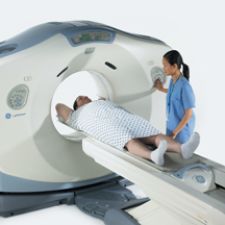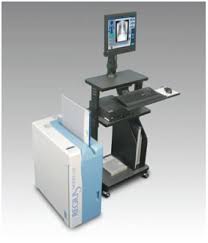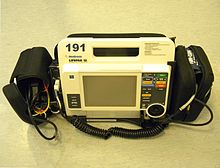Enabling its innovation champions to come forward, grow and flourish is the key to building the quality improvements needed for patient care, Andy Goldberg tells Marc Sansom.
By Marc Sansom, editor of HES
For more than 35 years, Roger Armour, a vascular surgeon from Hertfordshire had harboured an idea for a low cost lens free ophthalmoscope that he had always believed could change the lives of millions, particularly in the developing world.
Historically, diagnosing serious diseases such as glaucoma, diabetes, brain tumours and cerebral malaria has relied on the use of expensive, heavy and complex ophthalmoscopes that are often beyond the resources of health systems in the third world.
The simplicity, however, of Armour’s low cost device, which weighs just 30g has led to it being heralded as the next wind-up radio of healthcare, and brings it within the reach of millions of people, many of whom are children, who would otherwise have been left blind or suffered disability or even fatality without early diagnosis.
Founder of Medical Futures, Mr Andy Goldberg describes Armour’s device, as a real life example of how innovation in healthcare can change lives. It also demonstrates how an innovation neither needs to be high tech nor costly. It is hard to disagree with Health Minister, Lord Warner who said at last year’s Medical Futures Innovation Awards, We need more Roger Armour’s.
But why did it take 35 years for Armour’s device to come to fruition? How many more children’s sight could have been saved or lives retained? And why didn’t Armour act on his idea before?
According to Goldberg, many of the barriers to innovation are cultural. Of the most successful healthcare innovations that stemmed from clinicians, almost all of them took ten years or more to migrate from the innovators imagination’s before they even enter the commercialisation process, which adds another 7-10 years to the development life cycle before patients can benefit.
To reduce this lengthy innovation lag, Goldberg reasons that the NHS needs to create an environment that fosters, promotes and sustains the budding ideapreneur through an entrepreneurial support network that will facilitate innovation, rather than obstruct it.
Founded by Goldberg in a hotel room in 2001, Medical Futures stated objective is to do just that by encouraging a culture of creativity, innovation and leadership amongst healthcare professionals and taking forward the successful commercialisation of their ideas.
It achieves this through a number of activities including the Medical Futures Innovation Awards the Oscar’s for healthcare and its i2 Events, which are one day meetings designed to help clinicians develop and commercialise their ideas and business propositions.
The distinction Goldberg makes between the ideapreneur and the entrepreneur is central to the vision of Medical Futures. Clinicians ideas are highly valuable, but they need to be listened to much earlier, he pleads. Empower the clinicians and innovation will flourish.
Goldberg warns however that it’s not just about having a good idea. It’s also about execution and delivery. It’s about getting the business processes right from the moment an idea is conceived and taking it rapidly through to the point of implementation.
Only 10-15% of clinicians are entrepreneurs, but they are all potential ideapreneurs and it’s about how to capture that creativity for commercial success and patient advantage. It should be about bringing industry to the clinician and making best use of their different expertise.
At the i2 Events, the first question an ideaprenuer is always asked is concerned with their motivation. Goldberg explains: This question will define the terms of success. Why are they doing it? Is it for recognition of their idea? Is it because they want to take science forward? Is it because they want to change the world? Or are they simply doing it for financial gain? None of these motivations are wrong, but they will establish the roadmap.
Goldberg believes that the i2 events, which from 2006 will be held regionally, are already helping to change the horizon for clinicians. There’s always been a bit missing, that goes under the radar. i2 is about raising awareness, acquiring knowledge and building the trust of the sceptical clinician, who nearly always assume that industry will take their idea, make lots of money and shaft them in the process.
There is no better example of how the i2 Events can make a difference, than that of Roger Armour, who attended the first ever i2 back in 2002, where he particpated in interactive workshops run by experts in patent law, technical design, marketing, team building, venture finance and business consulting.
Roger’s Ophthalmoscope, now known as the Optyse, has been taken to market via a funded vehicle, to which Roger is a shareholder and an advisor.
The i2 events came about to meet the enormous demand from clinicians. They were a natural development for Medical Futures, whose non profit-making Awards in 2005 attracted more than 1200 entries. The Awards ceremony was a glittering high profile affair in November 2005 attended by 600 leading healthcare personalities, including government representatives, policy makers, medical experts, business leaders and key media.
Now formally supported by the Department of Health and judged by a world class panel of more than 30 leading figures, there are few more important events at which the receipt of an award will showcase your healthcare innovation to all the key stakeholders that can enable its commercialisation and widespread dissemination.
For the first time, last year’s overall Award won unanimous acclaim from all thirty judge’s and Goldberg himself is a true advocate of Dr David Moore’s tuberculosis (TB) test. Presently, diagnosing TB relies on growing the bacteria as a culture, which can take up to six weeks. The MODS technique, however, which Dr Moore and colleagues intends to become a type of laboratory freeware, enables a diagnosis in a matter of days. Set against the tragic story of 5,000 people dieing every day from a curable disease, the global potential, explains Goldberg, is to have a lasting impact on millions of lives.
Medical Futures is itself, of course, an exemplar of executing and delivering innovation, and following a contractual arrangement agreed with the Department of Health in 2004, is in positive dialogue with the NHS Institute for Innovation and Improvement (NHS II) and the nine NHS Innovations hubs.
As a member of the Healthcare Industry Task Force (HITF), which created the NHS II, Goldberg supports its aspirations. The NHS II will ideally provide a central hub that will enable a seamless overlap to help ensure simpler mechanisms for the procurement of innovative products, with ideas created from within the NHS being adopted by industry with their inherent skills for commercialising good ideas’.
However well thought through in principle, Goldberg reminds us that the success of an organisation or an innovation is all about execution. To deliver its agenda, he warns, the NHS II must make engaging clinicians a priority. Clinician’s are an entirely autonomous and independent group and at the same time they are fragmented and sceptical.
Change the atmosphere. Once you have the right ideas, put in the right business processes. Develop the right relationships with industry to co-develop the idea and share the risks and the upsides. Then create a mechanism to disseminate widely through the NHS.
A major concern for Goldberg however is the level and frequency of change in the NHS environment, which he believes is not conducive to innovation. As soon as people get used to a way of doing things, it changes. Will an innovation still be relevant in a new system?
He identifies the introduction of financial reforms in the way that hospitals are funded, otherwise known as Payment by Results (PbR), as a potential barrier to innovation. On the one hand, PbR could help to stimulate new ideas and concepts. If you set a target or create a problem, people will innovate to meet it or solve it.
But are the outcomes based on quality or numerical results? I would need to be convinced that choice, quality and safety can go hand in hand with volume. There needs to be minimum safety and quality standards set and at present there is no definition of what those standards are.
The key is the ability of the NHS to be big and yet act small at the same time, enabling its innovation champions to come forward, grow and flourish. Goldberg says: The most important message I would like to get across is the power of leveraging one’s ideas. One doctor can only treat one patient at a time, but invent a new medical device and you can multiply your effect by the power of x. Do this and you can leverage your knowledge for the benefit of everyone the clinician ideapreneur, the entrepreneur, industry, the investment community, wider society and of course, most importantly, the patient.



